
This scrollable interactive shows how an abstract of a research article is a
shortened version of the study.
- Subject:
- Biology
- Science
- Material Type:
- Interactive
- Provider:
- LabXchange
- Provider Set:
- LabXchange Interactives
- Date Added:
- 09/18/2019

This scrollable interactive shows how an abstract of a research article is a
shortened version of the study.

This screencast focuses on using post-reading questions to evaluate and improve understanding of a text. It offers general question ideas and a specific example of questions for "To Kill a Mockingbird" by Harper Lee. [3:37]
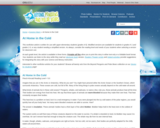
This article reprints and links to informational text about the adaptations that allow mammals and fish to survive in polar oceans. Versions are available for students in grades K-1, 2-3 and 4-5. Related science and literacy activities are included.

This PDF handout provides examples and use cases for attributions and citations. The document explains the importance of giving credit to the sources of information in a project or research paper, and provides clear examples of how to cite sources in different formats, including books, websites, and videos. The examples are easy to follow and provide a useful guide for students who are new to citing sources. Overall, this document is a helpful resource for understanding the basics of attribution and citation in academic research.

This article includes links to expository text for students in grades K-1, 2-3, and 4-5 about the aurora.
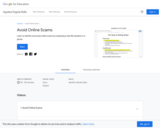
Learn to identify and avoid online scams by analyzing a real-life situation in a group. Time to complete: 45-90 minutes

As part of a review and close reading section of BBC Bitesize, this site presents an overview of various purposes of reading, including a five-bullet point explanation of reading purposes.

At this site from the Bureau of Labor Statistics find out about possible careers in your future by selecting a job based on what school subject you like.

This video segment from Wild TV takes a closer look at backyard bugs, their habitat and characteristics. [2:48]

A scanned copy of the 1895 publication of Steps to Reading by Nellie Dale, a beginning reader book for children.

In this video segment from Nature, researchers study pandas in an effort to halt their decline in population. [5:37]
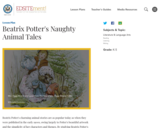
Through studying Beatrix Potter's stories and illustrations from the early 1900s and learning about her childhood in Victorian England, students can compare/contrast these with their own world to understand why Potter wrote such simple stories and why she wrote about animals rather than people.
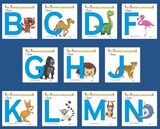
Practice beginning letter sounds B-N while reading these eBooks.

Practice beginning letter sounds P-Z while reading these eBooks.
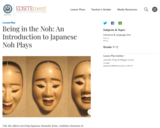
Noh, the oldest surviving Japanese dramatic form, combines elements of dance, drama, music, and poetry into a highly stylized, aesthetic retelling of a well-known story from Japanese literature, such as The Tale of Genji or The Tale of the Heike. This lesson provides an introduction to the elements of Noh plays and to the text of two plays, and provides opportunities for students to compare the conventions of the Noh play with other dramatic forms with which they may already be familiar, such as the ancient Greek dramas of Sophocles. By reading classic examples of Noh plays, such as Atsumori, students will learn to identify the structure, characters, style, and stories typical to this form of drama. Students will expand their grasp of these conventions by using them to write the introduction to a Noh play of their own.

Students will really be writing to sources with this lesson. They will write about cause and effects in a multi-flow map and then write sentences to explain the cause and effect relationships in this story.

Students will use illustrations and details in a story to describe its characters, setting, and events by working with partners to ask and answer questions about the text.

In this lesson, students compare the video version of the teleplay "The Monsters are Due on Maple Street" to the actual teleplay. (A teleplay is a play or script written for television.) The links to media in this lesson no longer work, but it could easily be adapted to a different teleplay or to a stage show contrasted with a movie version. The lesson materials include handouts, graphic organizers, and samples of student work.

Links to 73 lessons that focus on skills within third grade reading standard RL.3.5.

Students will learn the importance questioning has on comprehension of a text. Students will use sticky notes and an interactive reading notebook while working with an informational text.